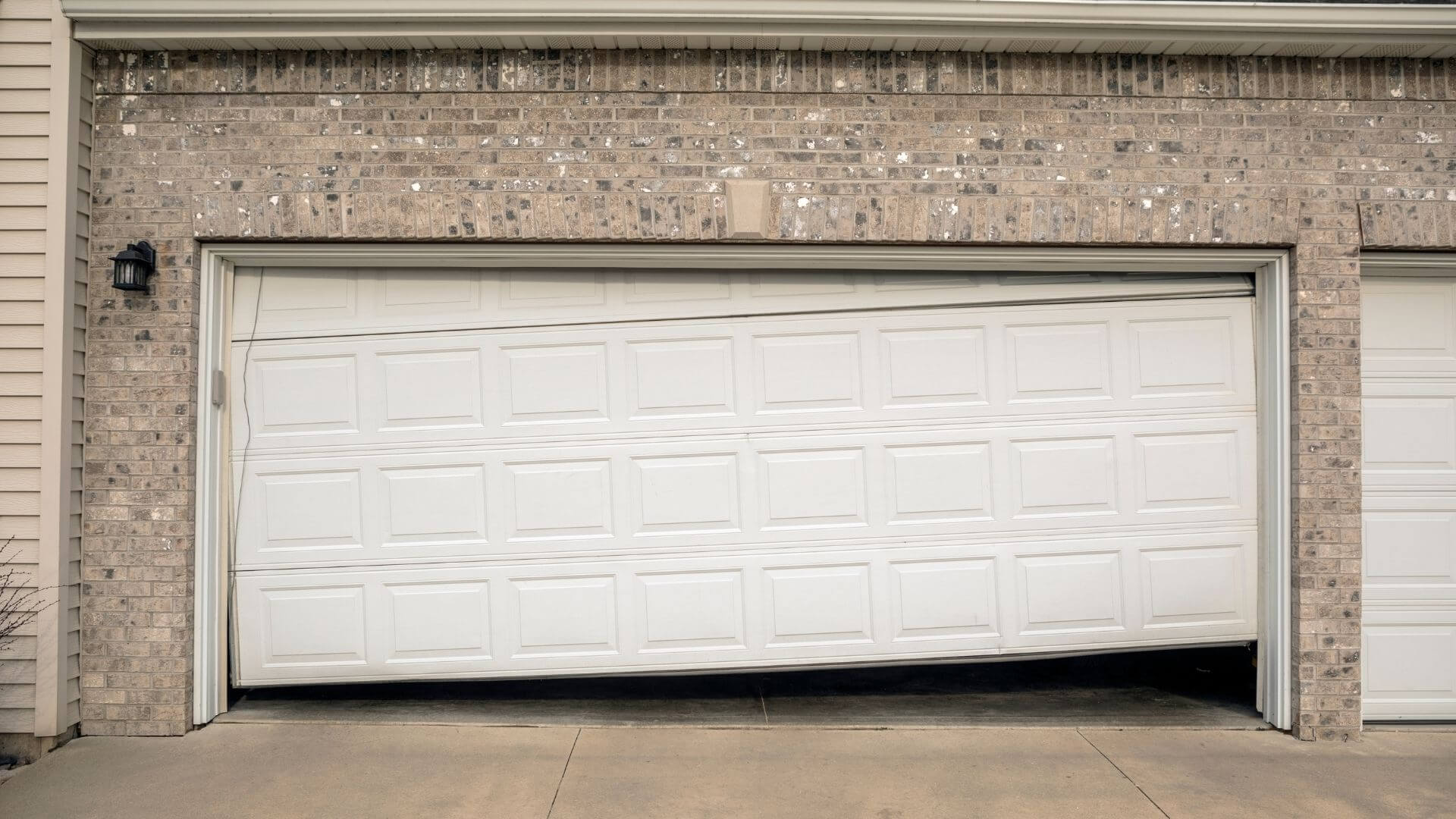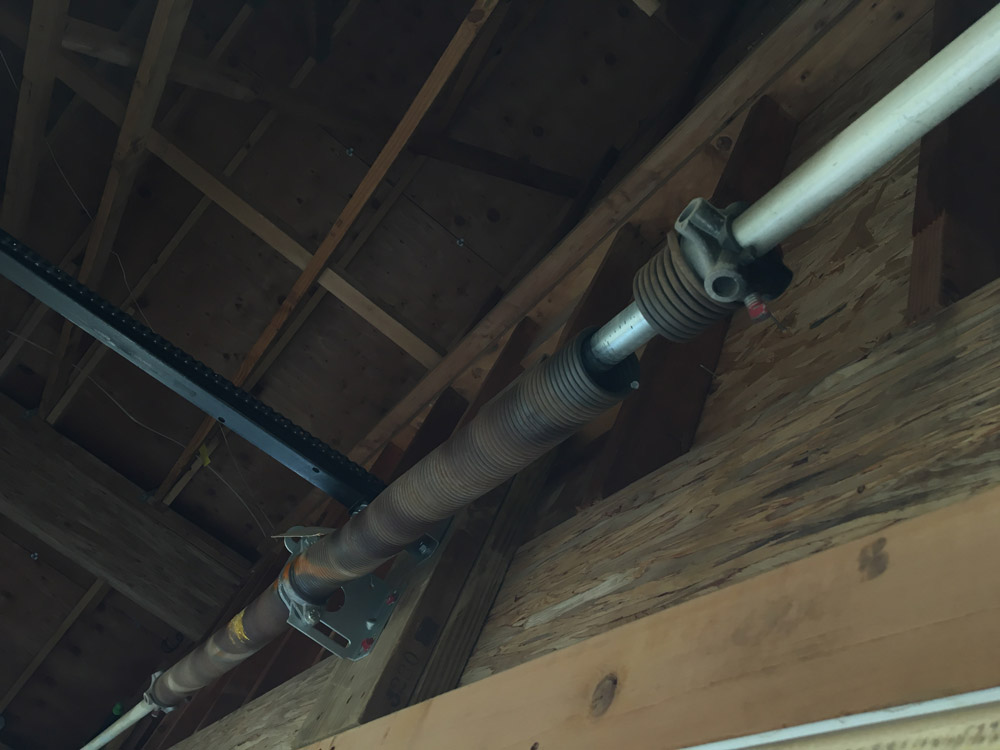The Dangers of a Broken Garage Door Spring
Important for getting in and out of the garage, the garage door spring also serves a key role in safety. Garage doors weigh anywhere from 130 to 400 pounds. If you happen to be in the wrong place at the incorrect time, a garage door spring breaking can cause serious injury.
Because the springs have to lift anywhere from 130 to 400 pounds, they have tons of pressure behind them. A garage door spring snapping can maim or kill. Never work on extension springs your self because it requires the experience of a knowledgeable technician.
How Long Does a Garage Door Last?
Most garage door experts agree that the springs will last roughly 10,000 cycles or seven years. That seems at average use, which means you open and close your garage door four times per day.
This daily winding up and unwinding can eventually lead to the spring breaking when you don’t have a technician to replace it beforehand.
Why Do Garage Door Springs Break?
Garage door springs break because of wear and tear. Over time, rust may start to form as humidity exposes the metal springs to moisture. Galvanized springs don’t experience the identical danger of rusting as other springs because of a protective layer.
The risk of a deadly failure will increase as the extension springs wear out with time.
Most Common Injuries from a Broken Spring
You have a few common injuries with broken extension springs that include:
- Broken wrists
- Broken fingers
- Head accidents
- Lacerations
Don’t underestimate the dangers because a broken garage door spring can kill. Now that garage doors use torsion springs, you don’t hear as much about people dying because of them. Manufacturers made torsion springs with a central metal shaft around them.
That doesn’t mean they come without risk as a result of someone inexperienced with garage doors should still never work with the springs.
Signs of a Broken Garage Door Spring
You have a few signs that the garage door spring has broken. Look for a 2-inch gap on the spring, which indicates that a break occurred. Other signs can point to a broken garage door as well, such as the door closing with larger force, the door not opening or closing, the door appearing crooked as it closes or the door opening only a few inches before it closes.
Better Than the Cure: Prevention
Yearly inspection and maintenance go a long way to keeping your garage door springs in good condition. They become most harmful when near the end of their lifespan. Apply lubrication to springs that make noise. Lubrication prevents rust from forming on the springs.
Understand: The heavier the door, the more pressure on the spring. That makes it more dangerous.
What Happen if a Spring Broke?
A garage door with a broken spring should have the door left closed. If the door stays in the open position, only close it if you can safely do so. Use the click from afar to close the door. Unplug the garage door opener from the wall to ensure that no one accidentally opens it. Otherwise, call in a technician to do it. Don’t risk injury.
You may think of breaking a finger as minor, but don’t underestimate the damage. We know of someone who worked on a garage door spring. It snapped and broke his thumb.
The thing is, it did more than break his thumb. The spring caused permanent nerve damage so that he could never use that hand again. On top of that, when the spring broke, it ricocheted and smashed him in the face.
The energy behind the spring caused a large laceration. Don’t underestimate a broken garage door spring. Even torsion springs pose a danger.
Many Stories of Injury
Unfortunately, you have many stories of broken garage door springs that injured someone. Only after they suffered an injury did they call us. We hope that it doesn’t require broken garage door spring before you call.
Our experts have the tools and understanding to work on extension springs safely. Luckily, you don’t have to replace garage door springs often. Having a technician replace a garage door spring costs anywhere from $100 to $300, but you will feel grateful that you didn’t risk an injury.
Where to Find the Springs on Your Garage Door
The location of the garage door springs vary. Torsion springs, usually much larger, will sit above the garage door. Extension springs are usually between 2 to 4 feet in length. You can see them above the tracks, but many of the newer models use a torsion spring because broken garage door spring from a torsion spring don’t pose the same danger.
Not only does it improve safety, but they last more and are sturdier. Still, call the experts even with a torsion spring.
The new garage door includes safety cables on the springs to hold it in place. In the past, garage door springs could break with such momentum that they would smash through a wall and injure the person in the next room.
If a spring on the garage door has broken, do not open the door. You increase the pressure on the working springs and have a high risk of it breaking.
Garage door springs deal with probably the most pressure as the door closes. Because of this, they often break with the door closed.


